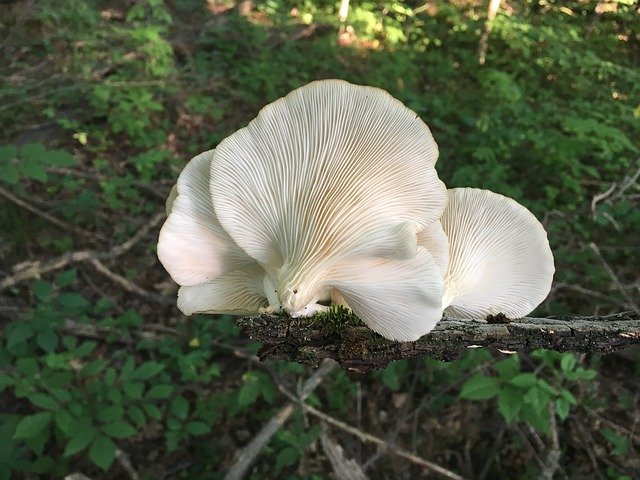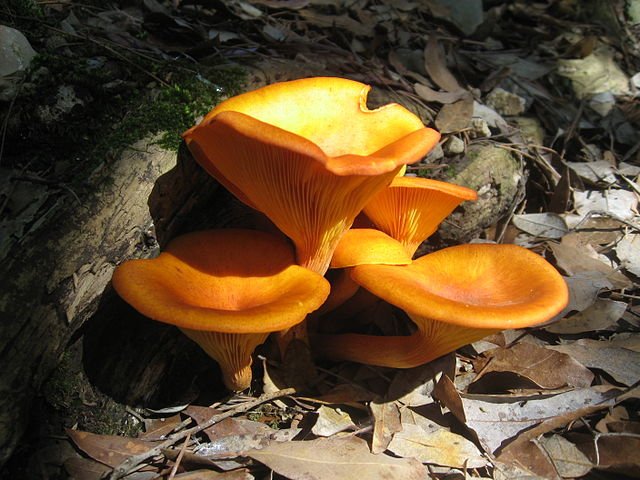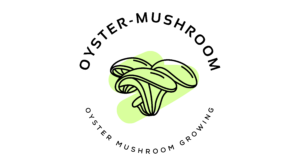Edible mushrooms are growing in popularity, and they are commonly used as a delicious ingredient in several dishes across the world. Oyster mushrooms are very rich in taste and nutrients.
We generally think that all mushrooms are edible, but this is not true for all mushrooms. Some mushrooms are extremely poisonous and can be fatal upon ingestion. Remember, do not eat any mushroom if you are not sure what type of mushroom it is. You must seek advice from a mushroom expert to know if a mushroom is suitable for consumption or not.
There is a great variation in mushrooms species due to genetics and environmental conditions. The correct identification of mushrooms is very important to avoid poisonous mushrooms. Care should be taken and the mushrooms growing in the wild should not be consumed as they can be deadly poisonous. Poisonous mushrooms contain toxic secondary metabolites that can be toxic even in very small amounts resulting in severe symptoms. Poisonous mushrooms can even cause death if consumed in large amount.
There are several edible mushrooms such as oyster mushroom, button mushroom, shitake mushroom, and milky mushroom. However, there are poisonous look alikes of these edible mushrooms that you may easily confuse with edible mushrooms.
Oyster mushrooms (Pleurotus ostreatus) are common edible fungi that are long known for their amazing nutritional and health benefits. They are rich in nutrients and their protein value is comparable to meat. However, care must be taken to avoid poisonous look-alike of oyster mushrooms.
Identification of oyster mushrooms
Here I will share a few tips with you on how to correctly identify oyster mushrooms to avoid toxic look alikes.
Let’s take a close look at some characteristic features of edible oyster mushrooms.

Oyster mushrooms are recognized by the presence of an oyster shaped cap. The first important characteristic feature of oyster mushrooms is the presence of decurrent gills. Decurrent gills are directly attached to the stem and run down the stem.
Features of cap
Take a close look at the cap of oyster mushrooms. It is usually fan or oyster shaped measuring 2 to 10 inches (5 to 25 cm). The cap will be smooth with no scales or warts. The cap usually grows in a shelf like manner with overlapping clusters. The color varies from light to brown with white firm flesh. The gills are decurrent and white colored.

Features of stem
Oyster mushrooms usually do not have a stem. If the oyster mushrooms growing on the side of the log will have stems then the stems will be stubby and off-centered. If the oyster mushrooms are growing on the top of the log, then they will have more well-developed stems. The stems will have white flesh. There will be no rings around the stem and no sack around the base.
Features of spore sprint
Oyster mushrooms are edible fungi that produce spores. The spores are lilac grey colored. To identify the spores, it is advised to make a spore sprint on dark background.
Characteristic smell of oyster mushrooms
Another important feature to identify oyster mushrooms is their characteristic smell. Oyster mushrooms have a mild anise smell. They have a sweet odor just like licorice.
Habitat
Oyster mushrooms are basically saprotrophic in nature which means they feed on dead organic matter. This is the reason you will often find them growing on dead or dying trees and logs.

Oyster mushrooms mostly grow on deciduous trees (deciduous trees are those trees that lose their leaves). They often grow on aspen, beech, and occasionally on conifers.
How to rule out poisonous look alikes of oyster mushrooms?
In this article, I will tell you how to rule out poisonous lookalikes of oyster mushrooms. There are several other types of oyster mushrooms that are edible for example Golden oyster (Pleurotus citrinopileatus), king oyster (Pleurotus eryngii),blue Oyster (Pleurotus Columbinus), king tuber (Pleurotus tuberregium),pink oyster (Pleurotus Djamor), and phoenix oyster (Pleurotus pulmonarius).
All these mushrooms are edible and completely safe for human consumption. If you mistake king oyster for king tuber you will not be poisoned as both types are safe for consumption.
Elm oyster (Hypsizgus ulmarius) is another similar species that is not a true oyster mushroom, but it is often mistakenly considered as an oyster mushroom. Elm oyster mushroom is edible, but it is not as delicious as true oyster mushrooms. To differentiate between a true oyster mushroom and an elm oyster look at the gills closely. If the gills are running down the stem it is a true oyster mushroom however the gills of elm oyster mushrooms do not run down the stem.
A mushroom expert can easily tell the difference between poisonous and edible mushrooms. If you want to correctly differentiate between poisonous and edible mushrooms look at the pictures and information provided on internet sources.
Poisonous Look-Alikes of oyster mushrooms
Though edible mushrooms are extremely beneficial dietary ingredients. But still, you need to be careful while choosing mushrooms for consumption as several mushroom species can be extremely poisonous. Some poisonous fungi strikingly resemble edible mushroom species. There are several reported cases of mushroom poisoning in humans with several mild to severe symptoms.
You might be thinking if there are any toxic look alikes of oyster mushrooms.
There are 3 poisonous look-alikes of oyster mushrooms. You must be familiar with the poisonous look-alikes to avoid confusing edible oyster mushrooms with poisonous mushrooms.
1. Jack-O-Lantern (Omphalotus Olearius)
Omphalotus Olearius is commonly known as Jack-O-Lantern mushroom. It resembles the chanterelles and can be easily confused. However, it also resembles oyster mushrooms and can be easily mistaken with edible oyster mushrooms. Like oyster mushrooms, Jack-O-Lantern mushrooms also possess gills that run down the stem.

The key feature to distinguish between true oyster mushrooms and jack-o-lantern mushroom is the bright orange hue. True oyster mushrooms do not turn orange.
Jack-O-Lantern mushroom is bioluminescent. The gills of these mushrooms give a blue-green hue under low light conditions.
According to several reports, Jack-O-Lantern mushroom is not deadly, but it is still poisonous. You will experience diarrhea, cramps, and vomiting after eating Jack-O-Lantern mushrooms.
2. Ghost Fungus (Omphalotus nidiformis)
Ghost fungus is a poisonous mushroom that is often mistaken for oyster mushrooms. Omphalotus nidiformis is notable for its bioluminescent property. It glows under dark conditions. Ghost fungus resembles oyster mushrooms because it has white- or cream-colored gills that run down the stipe. But it is easy to tell the difference between ghost fungus and oyster mushroom based on the bioluminescent property. You can easily tell the difference at night however it will be difficult to tell the difference during the daytime.

Though oyster mushrooms are delicious edible mushrooms the ghost fungus is not edible, and it can be poisonous upon ingestion. It is not fatal, but it can induce vomiting and severe abdominal cramps.
The fungus usually grows in Australia, Tasmania, and Japan. Recently, it has also been reported in India. If you are not living in any of these areas, you might not find it. However, you still need to be careful while eating wild mushroom species. Read more about hunting for Oyster Mushroom here.
3. Funnel (Clitocybe dealbata)
Funnel mushroom is a poisonous lookalike of elm oyster mushrooms. To tell the difference between funnel and oyster mushrooms look at the gills closely. The gills of funnel mushrooms stop at the base of the stem.

Funnel mushroom induces several toxicity symptoms after ingestion. It is known as sweating mushroom because it induces increased sweating along with abdominal pain, diarrhea, nausea, blurred vision, and abnormal breathing.
Bottom Line
Oyster mushrooms are edible fungi that are highly rich in taste and nutrients. These mushrooms commonly grow in wild on wooden logs. However, care must be taken to select an edible oyster mushroom species because they have a few poisonous look alikes that can be very detrimental to human health. Poisonous mushrooms can induce several symptoms such as nausea, vomiting, diarrhea, abdominal cramps, vision defects, and abnormal breathing. To avoid eating poisonous mushrooms you can seek help from experts or use information and pictures available in the literature and the internet to identify mushrooms.
Enjoy eating your favorite oyster mushrooms!
For more queries and questions related to growing oyster mushrooms feel free to write to us.




